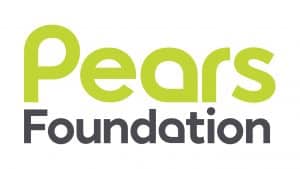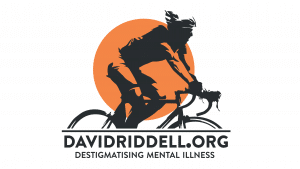The mental health of children and young people has faced major challenges in the last five years, especially following the Covid pandemic and now a cost-of-living crisis. Five years since NHS Digital began consistently monitoring young people’s mental health, we’ve analysed the 2022 data to highlight the urgent need for effective mental health services and support for young people.
Where NHS Digital have used the phrase ‘probable mental disorder’, we have chosen to use ‘mental health difficulty’.
Key findings
- One in four teenagers aged 17-19 have a mental health difficulty, an increase from one to six in 2021.
In 2022, 18% of 7-16 year olds and 22% of 17-24 year olds had a mental health difficulty. The rate has remained stable for the 7-16 group since 2020, but shows an increase from one in six (17%) to one in four (26%) for the 17-19 year olds from 2021 to 2022.
- The role of poverty
The data confirms what we already know: that poverty continues to have a strong link to young people’s poor mental health. Similarly to previous datasets, more than one in four (29%) 7-16 year olds with a mental health difficulty lived in households which experienced a reduction in income in the past year.
The same pattern was seen among 17-22 year olds with a mental health difficulty: 15% reported living in a household that had experienced not being able to buy enough food or using a food bank in the past year, compared with 2% of young people unlikely to have a mental health difficulty.
- Reversed patterns of probable mental health difficulty for boys/young men and girls/young women
This report presented an interesting pattern of mental health difficulty for boys and girls. In 7-10 year olds, nearly twice as many boys (20%) as girls (11%) had a mental health difficulty, whereas in 17-24 year olds this pattern was reversed, with much higher rates in young women (31%) than young men (13%).
Although this finding is not new, it once again highlights the need for a more gender-specific approach to mental health. This could involve further research on gender-specific risk factors to mental health, or the effectiveness of gender-specific mental health intervention and prevention programmes.
- Negative experience of social media in young people with a mental health difficulty
The 2022 survey was the first in the series to ask whether young people have been bullied online, and whether they feel safe using social media. The data revealed that one in eight 11-16 year old social media users reported that they had been bullied online. However, this figure is more than one in four (29.4%) among those with a mental health difficulty. Similarly, children with a mental health difficulty in this age group were less likely to report feeling safe online (48.4%) than those without (66.5%).
Among 17-24 year olds who used social media, 15% reported that they have been bulled online, with almost twice as many young women (20%) as young men (11%) reporting it. Similar to the younger group, being bullied online was more prevalent in those with a mental health difficulty (26%) compared to those without (11%).
Taken together, negative experiences with social media underline its potential role as a risk factor to mental health. At the same time, given the high number of young people using social media, this is undoubtedly a medium through which effective mental health services and support can be provided. This corroborates the finding in the same report that online and telephone support is one of the most commonly reported sources of mental health help and advice for young people, especially those aged 17-23 (19%).
- Educational experiences of children and young people
Although there has been a drop in the total number of young people who missed more than 15 days of school (11% to 6%), the rate was higher in children with a mental health difficulty; nearly 13% missed more than 15 days of school compared with 4% of those unlikely to have a mental disorder.
Moreover, 11-16 year olds with a mental health difficulty (61%) were also less likely to feel safe at school than those without (89%), and were less likely to enjoy learning or to have a friend they could turn to for support.
What needs to change?
Whilst policy initiatives such as the green paper and the NHS Long Term Plan are being implemented to improve access to mental health support, these findings demonstrate that much more ambitious action is needed to reverse this downward trend. The government has recently committed to developing a new ten-year mental health plan, and it is crucial that the needs of children and young people are placed at the heart of this.
Our priorities for action include:
- Address child poverty
If we are serious about reducing the numbers of children and young people who experience mental health problems, we must first take action to address the risk factors for poor mental health. We know that living in poverty is toxic for mental health, with the current cost-of-living crisis exacerbating these pressures. However, there are practical steps the Government can take to relieve the pressure on household incomes and bring about improvements in children and young people’s mental health. This includes helping with childcare costs for the least well-off and ending discriminatory rules such as the two-child limit on child benefit payments.
- Implement whole school and college approaches
The findings demonstrate that mental health problems can impact on children’s experiences of education. It is crucial that school environments are created where young people feel safe and supported, and where mental health is embedded as part of the culture of the school. For this to happen, we believe there needs to be national implementation of whole school and college approaches to mental health and wellbeing across all education settings.
The Government has set out its vision for whole school and college approaches in the green paper, which includes new Mental Health Support Teams and new senior mental health leads. However, we are concerned about the scale and speed these proposals will be rolled out, and no detail has yet been provided on funding a full national roll out.
- Invest in early intervention support
We have long been calling for greater investment in early intervention support to ensure that children and young people can access the support they need, at a time that is right for them. There has been growing consensus for accessible services based in the community, such as the early support hub model.
Early support hubs offer easy-to-access, drop in support on a self-referral basis for young people with mild to emerging mental health problems, up to the age of 25. Evidence has shown that not only do these hubs deliver excellent outcomes for young people, they provide an effective gateway to further support for young people facing the greatest mental health inequalities, including older young people, LGBTQ+ young people, and young people from racialised communities.
Alongside YoungMinds, Youth Access, Mind, The Children’s Society, BACP and Black Thrive, we have been calling for a national networks of these hubs to be implemented across the country as part of the #FundtheHubs campaign.
The survey confirms there has been a continuous decline in children and young people’s mental health, and that inequalities are widening. As the pressures on children’s mental health continue to increase, it is now more important than ever that concerted action is taken to turn the tide.
Authors: Huong Le and Charlotte Rainer







